- Tips for Growing Iberis from Seed
- 1. Start with quality seeds
- 2. Sow the seeds at the right time
- 3. Prepare the soil
- 4. Sow the seeds
- 5. Water regularly
- 6. Provide enough sunlight
- 7. Thin the seedlings
- 8. Fertilize as needed
- 9. Monitor for pests and diseases
- 10. Enjoy the blooms
- Choosing the Right Location for Iberis
- Sunlight Requirements
- Soil Type
- Moisture Levels
- Protection from Harsh Weather
- Space and Air Circulation
- Attractiveness and Accessibility
- Preparing the Soil for Iberis
- 1. Choose the right location
- 2. Clear the area
- 3. Loosen the soil
- 4. Amend the soil
- 5. Check the pH level
- 6. Level the soil
- 7. Water the soil
- 8. Mulch the area
- Planting Iberis Seeds
- Choosing the right time to plant
- Preparing the soil
- Sowing the seeds
- Care and maintenance
- Conclusion
- Care and Maintenance of Iberis
- Watering
- Soil
- Fertilizing
- Pruning
- Pest and Disease Control
- Overwintering
- Propagation
- Common Varieties
- Conclusion
- Watering Iberis
- Pruning Iberis
- Timing
- Tools
- Removing Dead or Damaged Growth
- Shaping
- Encouraging Secondary Blooms
- Caring for Established Iberis
- Common Pests and Diseases of Iberis
- Pests
- Diseases
- Questions and Answers:
- When is the best time to start growing Iberis from seed?
- Can I plant Iberis seeds directly in the garden?
- How long does it take for Iberis seeds to germinate?
- What kind of soil does Iberis prefer?
- Is Iberis a hardy plant?
- How tall does Iberis grow?
- Videos: 15 Perennials Every Garden Should Have! // Garden Answer
If you are looking for a beautiful and low-maintenance flower to add to your garden, look no further than Iberis. Commonly known as candytuft, Iberis is a popular choice among gardeners for its delicate white flowers and evergreen foliage. What makes Iberis even more appealing is its ability to grow easily from seed, making it a perfect option for both experienced gardeners and beginners.
When it comes to planting Iberis, you have a few options. You can either sow the seeds directly into the ground or start them indoors and transplant them later. If you choose to sow them directly, make sure to select a sunny spot with well-draining soil. Iberis thrives in full sun and will tolerate a wide range of soil conditions, including sandy and clay soils.
Once you have chosen the perfect location, prepare the soil by removing any weeds or debris and loosening it with a garden fork. Scatter the Iberis seeds over the area and lightly press them into the soil. Keep the soil moist until the seeds germinate, which usually takes around 10 to 14 days. Once the seedlings have emerged, thin them out, leaving about 8 to 12 inches between each plant to allow for proper air circulation.
When it comes to caring for Iberis, the key is to provide it with the right amount of water and fertilizer. Iberis is a drought-tolerant plant and does not require a lot of watering, especially once it is established. However, during dry spells, make sure to water it deeply to encourage deep root growth. In terms of fertilizer, a slow-release fertilizer applied in early spring should be sufficient to keep your Iberis healthy and blooming.
Iberis is not only a beautiful addition to any garden, but it also attracts pollinators, such as bees and butterflies. Its delicate white flowers create a stunning contrast against green foliage, making it a perfect choice for borders, rock gardens, and containers. With its easy-to-grow nature and low maintenance requirements, Iberis is the perfect plant for both seasoned gardeners and beginners alike.
Tips for Growing Iberis from Seed
Growing Iberis from seed can be a rewarding and enjoyable experience. Here are some tips to help you successfully grow these beautiful plants:
1. Start with quality seeds
Choose high-quality Iberis seeds from a reputable supplier. Look for seeds that are fresh and have a high germination rate.
2. Sow the seeds at the right time
Iberis seeds can be sown directly outdoors in the spring or started indoors 6-8 weeks before the last frost date. Check the specific instructions on the seed packet for the recommended sowing time.
3. Prepare the soil
Before sowing the seeds, prepare the soil by removing any weeds and loosening the top layer. Iberis plants prefer well-draining soil, so adding organic matter or compost can help improve drainage.
4. Sow the seeds
Spread the Iberis seeds evenly over the prepared soil. Lightly press them into the soil, but do not cover them completely, as they need light to germinate.
5. Water regularly
Keep the soil consistently moist but not waterlogged. Watering the seeds gently with a fine mist spray or using a sprinkler can help prevent the seeds from being dislodged.
6. Provide enough sunlight
Iberis plants thrive in full sunlight. Place them in a location that receives at least 6 hours of direct sunlight per day.
7. Thin the seedlings
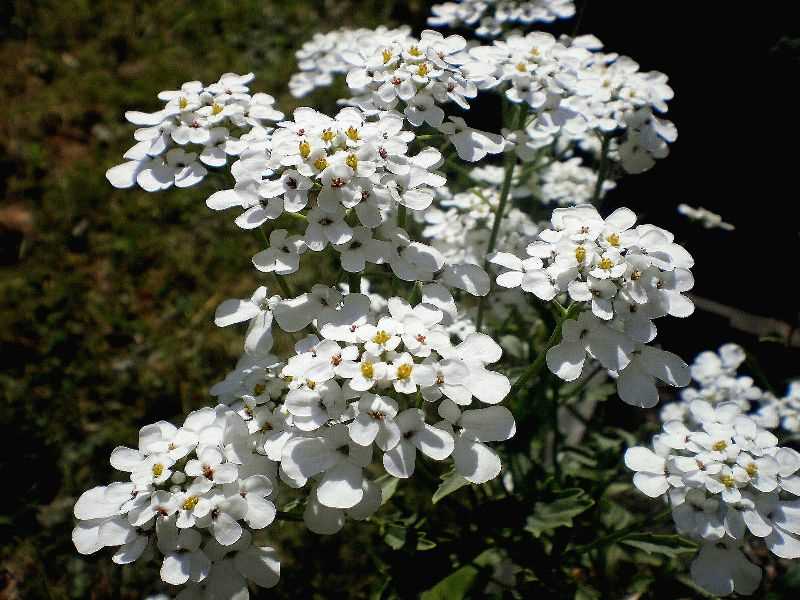
Once the seedlings have emerged, thin them out to ensure proper spacing. This will allow the remaining seedlings to grow into healthy and robust plants.
8. Fertilize as needed
Feed the Iberis plants with a balanced, slow-release fertilizer once they have established. Follow the instructions on the fertilizer packaging for proper dosage.
9. Monitor for pests and diseases
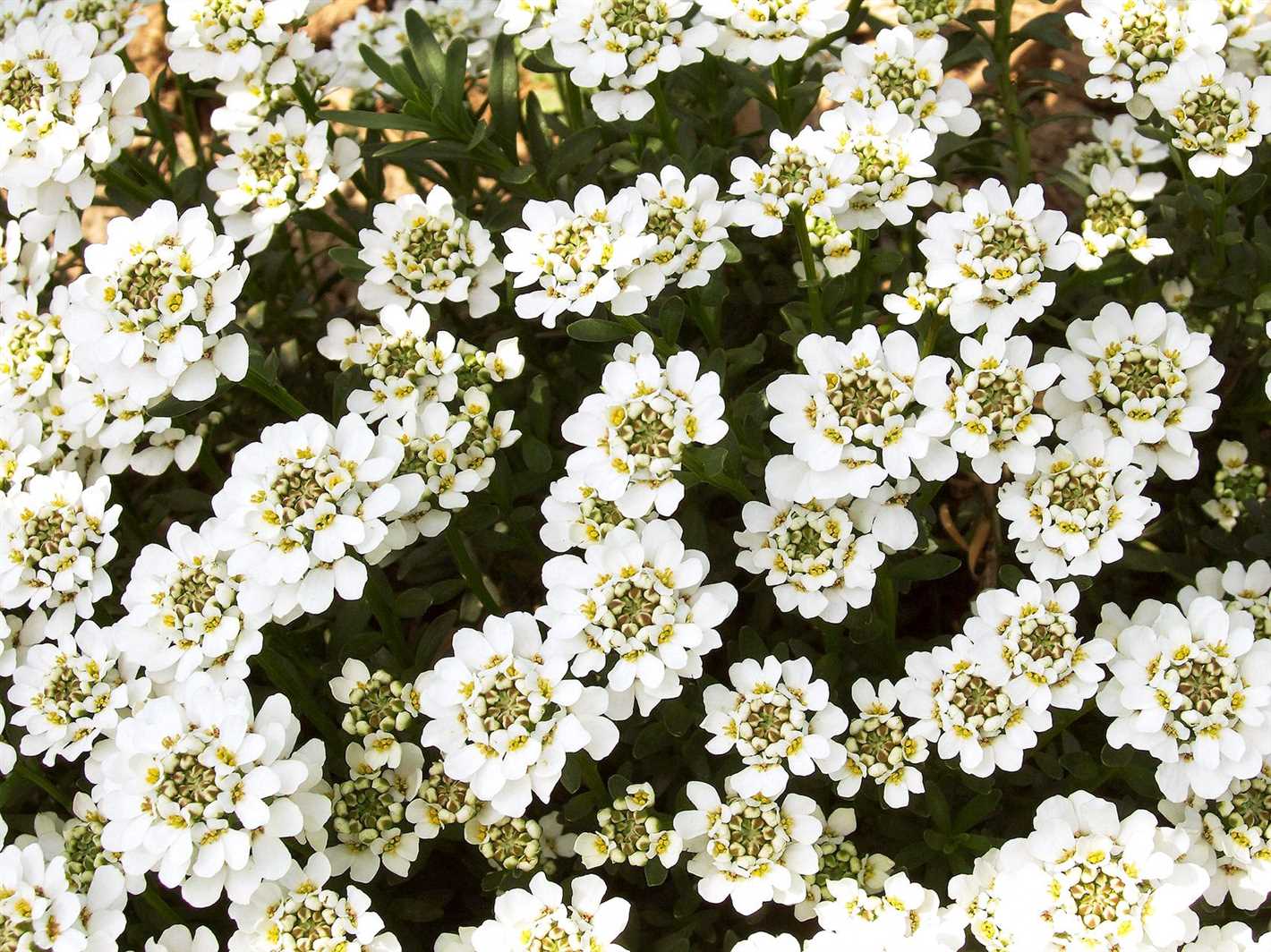
Regularly check the plants for any signs of pests or diseases, such as aphids or powdery mildew. If any issues are identified, take appropriate measures to control them.
10. Enjoy the blooms
Once the Iberis plants start to bloom, sit back and enjoy their beautiful and fragrant flowers. Regular deadheading can help prolong the blooming period.
By following these tips, you can successfully grow Iberis from seed and enjoy a colorful and vibrant garden. Happy gardening!
Choosing the Right Location for Iberis
When it comes to growing Iberis, choosing the right location is crucial for the plant’s health and overall growth. Here are some important factors to consider when selecting the perfect spot for your Iberis:
Sunlight Requirements
Iberis plants thrive in full sun conditions, meaning they require at least 6-8 hours of direct sunlight each day. It’s best to choose a location that receives morning sun and partial shade in the afternoon, especially in areas with hot summers.
Soil Type
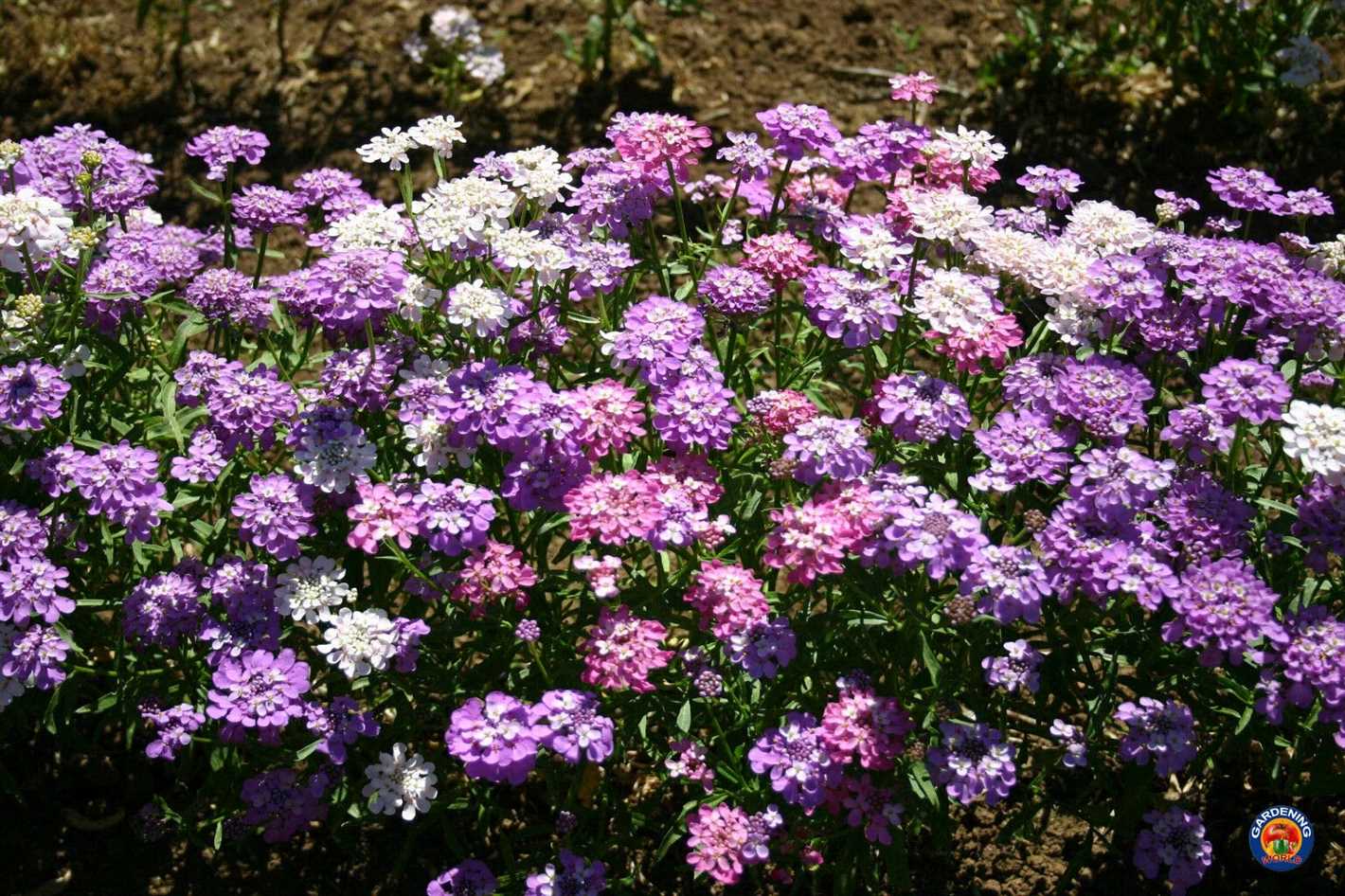
Iberis prefers well-draining soil that is fertile and slightly acidic. The soil should also be rich in organic matter. Before planting, make sure to amend the soil with compost or well-rotted manure to improve its texture and fertility.
Moisture Levels
Iberis plants are drought-tolerant once established, but they still require consistent moisture during their initial growth stages. However, overly wet soil can lead to root rot and other diseases. Therefore, it’s important to choose a location with good drainage to prevent waterlogging.
Protection from Harsh Weather
While Iberis can tolerate cold temperatures and frost, it’s best to choose a location that offers some protection from harsh weather conditions, such as strong winds and heavy rain. Planting Iberis near a wall or placing a windbreak can help prevent damage to the delicate flowers and foliage.
Space and Air Circulation
Since Iberis plants can spread and form dense mats, it’s important to give them enough space to grow and ensure proper air circulation. Planting them too close together can lead to poor airflow, which increases the risk of fungal diseases. Therefore, allow enough space between plants to promote healthy growth.
Attractiveness and Accessibility
Consider choosing a location for your Iberis where it can be easily seen and appreciated. The beautiful, fragrant flowers will add color and charm to your garden, so placing them near walkways, entrances, or seating areas can enhance the overall appeal.
By considering these factors and selecting the right location for your Iberis, you can ensure that your plants thrive and provide an enchanting display of flowers year after year.
Preparing the Soil for Iberis
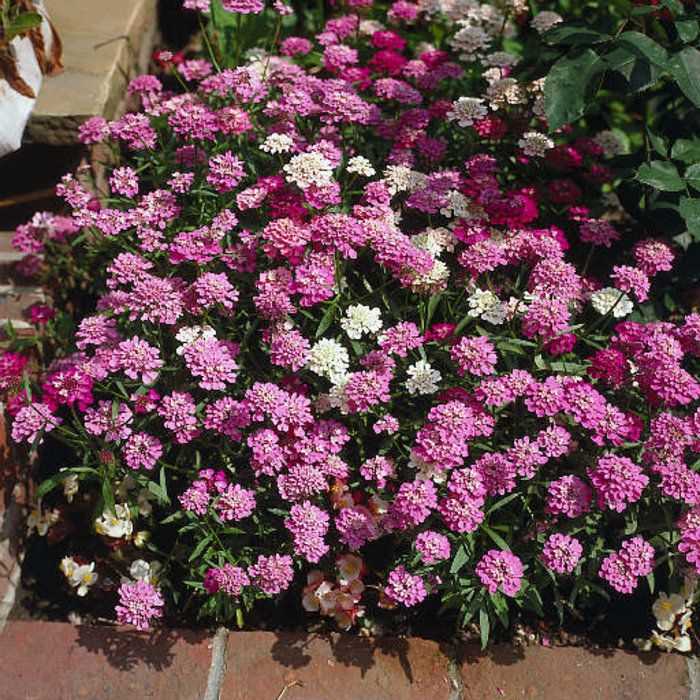
Before planting Iberis seeds, it is important to prepare the soil to provide the best growing conditions for the plant. Here are some steps to follow:
1. Choose the right location
Iberis plants thrive in a sunny location with well-draining soil. Choose a spot in your garden that receives at least 6 hours of sunlight each day.
2. Clear the area
Remove any weeds, grass, rocks, or debris from the chosen planting area. This will help prevent competition for nutrients and ensure good seed-to-soil contact.
3. Loosen the soil
Using a garden fork or a tiller, loosen the soil to a depth of about 6-8 inches. This will improve drainage and provide a loose, fertile bed for the Iberis seeds to germinate and grow.
4. Amend the soil
If your soil is heavy or clayey, add organic matter such as compost or well-rotted manure to improve its structure and fertility. Mix the organic matter into the soil evenly.
5. Check the pH level
Iberis plants prefer slightly acidic to neutral soil with a pH level between 6.0 and 7.0. Test the soil pH using a home testing kit and adjust it if necessary by adding lime to raise pH or sulfur to lower pH.
6. Level the soil
Smooth out the soil surface with a rake to create a level planting bed. This will make it easier to sow the Iberis seeds evenly.
7. Water the soil
Before sowing the seeds, water the soil thoroughly. This will help settle the soil and provide moisture for the seeds to germinate.
8. Mulch the area
After sowing the Iberis seeds, cover the soil with a thin layer of organic mulch such as straw or shredded bark. This will help retain soil moisture, suppress weed growth, and protect the emerging seedlings.
By following these steps, you can create the perfect soil environment for your Iberis plants to grow and thrive.
Planting Iberis Seeds
Planting Iberis seeds is a simple and straightforward process that can be done in just a few easy steps. With the right conditions and care, you can grow beautiful Iberis plants from seeds.
Choosing the right time to plant
Iberis seeds should be planted in the spring, after the last frost of the year. This ensures that the plants have enough time to establish themselves before the summer heat arrives. You can also start the seeds indoors, about 6-8 weeks before the last frost date, and then transplant them outdoors once the weather is warm enough.
Preparing the soil
Before planting the seeds, it’s important to prepare the soil to give the plants the best chance of success. Iberis plants prefer well-draining soil with a neutral to slightly alkaline pH. You can amend the soil with compost or well-rotted manure to improve its fertility and drainage.
Sowing the seeds
Choose a sunny location in your garden for planting the Iberis seeds. Scatter the seeds thinly and evenly over the prepared soil, and then lightly cover them with a thin layer of soil or vermiculite. Gently water the area to help settle the soil and ensure good seed-to-soil contact.
Care and maintenance
Once the seeds have been planted, it’s important to provide them with proper care and maintenance to encourage healthy growth. Keep the soil moist but not waterlogged until the seeds germinate, which usually takes about 10-14 days. After the seedlings emerge, thin them to about 6-8 inches apart to give them enough space to grow.
Iberis plants are relatively low-maintenance and don’t require much additional care. However, you can fertilize them with a balanced fertilizer once or twice during the growing season. Deadhead the spent flowers to encourage more blooms and remove any weeds that may compete for nutrients and moisture.
Conclusion
By following these simple steps, you can successfully plant Iberis seeds and grow beautiful, flowering plants. With proper care and maintenance, your Iberis plants will reward you with colorful blooms and a delightful fragrance.
Care and Maintenance of Iberis
Watering
Iberis plants require regular watering, especially during dry periods. Water the plants deeply at the base, making sure to thoroughly moisten the root zone. It is best to water in the morning or evening to avoid evaporation.
Soil
Iberis plants prefer well-draining soil that is slightly acidic to slightly alkaline. They can tolerate a wide range of soil conditions but perform best in loamy soil with good drainage. Adding organic matter, such as compost or peat moss, to the soil can improve its structure and drainage.
Fertilizing

It is generally not necessary to fertilize Iberis plants, as they can thrive in nutrient-poor soil. However, you can apply a slow-release fertilizer diluted to half-strength in the spring to encourage healthy growth. Avoid over-fertilizing, as it can lead to excessive foliage growth and reduced flower production.
Pruning
Iberis plants benefit from regular pruning to maintain their shape and promote bushier growth. After the first wave of flowering, trim back the plants to remove spent blooms and encourage new growth. You can also prune back the plants in early spring to remove any dead or damaged growth.
Pest and Disease Control
Iberis plants are generally resistant to pests and diseases. However, they can occasionally be affected by aphids, caterpillars, or fungal diseases such as powdery mildew. Regularly inspect the plants for any signs of pest infestation or disease and take appropriate measures, such as using insecticidal soap for aphids or applying a fungicide for powdery mildew.
Overwintering
In regions with cold winters, Iberis plants may need some protection to survive. Apply a layer of mulch around the plants in late fall to insulate the roots and protect them from freezing temperatures. If the winter is exceptionally harsh, you can also cover the plants with a frost cloth or move potted plants indoors.
Propagation
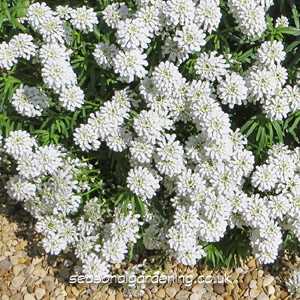
Iberis can be propagated from seeds, cuttings, or division. To propagate from seeds, sow them in containers or directly in the garden in early spring. For cuttings, take 3 to 4-inch-long stem cuttings in late spring or early summer and root them in a well-draining potting mix. Division can be done in the spring or fall by carefully separating the clumps and replanting them.
Common Varieties
Some popular varieties of Iberis include ‘Snowflake’ with double white flowers, ‘Purity’ with pure white flowers, ‘Pink Ice’ with pink flowers, and ‘Masterpiece’ with pink and white bicolored flowers. Choose the variety that suits your garden aesthetic and climate.
Conclusion
With proper care and maintenance, Iberis plants can provide a beautiful display of delicate flowers in your garden. Follow the watering, soil, fertilizing, pruning, and pest control guidelines to ensure the health and longevity of your Iberis plants.
Watering Iberis
Proper watering is essential for the healthy growth and development of Iberis plants. Here are some tips to help you water your Iberis effectively:
Frequency: Water your Iberis regularly, especially during the hot summer months. Iberis plants prefer moist soil but do not like to sit in waterlogged conditions. Aim to water your plants deeply once or twice a week, depending on the weather and soil moisture levels.
Timing: Water your Iberis early in the morning or in the evening to prevent excessive evaporation and ensure that the plants have enough time to dry before nighttime. Avoid watering during the hottest part of the day to minimize water loss and reduce the risk of leaf burn.
Soil moisture: Check the moisture level of the soil before watering. Stick your finger about an inch into the soil and if it feels dry, it’s time to water. However, if it feels moist, wait a day or two before watering again.
Watering technique: Water the soil around the Iberis plants, avoiding wetting the foliage and flowers as this can lead to fungal diseases. Use a watering can or a gentle spray nozzle on a hose to provide a slow and even distribution of water to prevent runoff.
Container-grown Iberis: If you are growing Iberis in containers, they may require more frequent watering as the soil dries out faster. Check the moisture level of the container soil regularly and adjust your watering schedule accordingly.
Drought tolerance: Once established, Iberis plants are quite drought-tolerant. However, it is still important to provide supplemental watering during prolonged dry spells to ensure their health and promote continuous blooming.
Water quality: Iberis plants prefer slightly acidic to neutral soil pH. If your water is alkaline, you may need to adjust the pH by adding organic matter, such as compost, to the soil to create a more suitable environment for your Iberis plants.
By following these watering tips, you can help your Iberis plants thrive and enjoy their beautiful blooms throughout the growing season.
Pruning Iberis
Pruning Iberis, also known as candytuft, is an important task that helps maintain the plant’s shape, promote blooming, and ensure overall health. Here are some tips on how to properly prune Iberis:
Timing
The best time to prune Iberis is in early spring or right after it finishes blooming. This allows the plant to recover and promote new growth for the next season.
Tools
Before you start pruning, make sure you have the right tools. You’ll need a pair of sharp pruning shears or scissors to make clean cuts without damaging the plant.
Removing Dead or Damaged Growth
Begin by inspecting the plant for any dead or damaged growth. Use your pruning shears to remove these parts, cutting them back to healthy tissue. This helps improve the plant’s appearance and prevents the spread of diseases.
Shaping
Next, consider the overall shape of the plant. Iberis can have a compact, mounding habit or a more cascading form. To achieve the desired shape, selectively prune the tips of the branches. Make cuts just above a set of healthy leaves or a bud to encourage new growth in that area.
Encouraging Secondary Blooms
If your Iberis has finished blooming and you want to promote a second round of flowers, consider a light pruning. Cut the stems back by about one-third to encourage new flowering shoots.
Caring for Established Iberis
For established Iberis, you may need to perform more extensive pruning every few years to rejuvenate the plant. In late winter or early spring, cut back the entire plant to about one-third of its size. This drastic pruning allows for new growth and helps keep the plant healthy and vigorous.
Remember to always clean your pruning tools before and after use to prevent the spread of diseases between plants. Additionally, it’s important to dispose of the pruned material properly, especially if it contains any diseased or pest-infested growth.
Common Pests and Diseases of Iberis
Iberis plants are generally healthy and resistant to common diseases and pests. However, there are a few issues that you may encounter while growing Iberis. Here are some common pests and diseases of Iberis:
Pests
- Aphids: These small insects feed on the sap of Iberis plants, causing leaves to curl and distort. To control aphids, you can wash them off with a strong spray of water or apply insecticidal soap.
- Slugs and snails: These pests feed on the leaves and flowers of Iberis, leaving behind holes and slime trails. To protect your plants from slugs and snails, you can place traps or use organic slug pellets.
- Cabbage worms: These green worms can attack Iberis plants, eating through leaves and leaving behind chewed foliage. Handpicking the worms and using organic insecticides can control cabbage worms.
Diseases
- Powdery mildew: Powdery mildew is a fungal disease that can affect the leaves of Iberis, causing a white powdery coating. To prevent powdery mildew, make sure to provide good air circulation and avoid overhead watering.
- Root rot: Overwatering or poorly-drained soil can lead to root rot in Iberis plants. To prevent root rot, make sure to plant Iberis in well-draining soil and avoid overwatering.
It’s important to regularly inspect your Iberis plants for any signs of pests or diseases. By taking prompt action and implementing proper prevention measures, you can keep your Iberis plants healthy and thriving.
Questions and Answers:
When is the best time to start growing Iberis from seed?
The ideal time to start growing Iberis from seed is in early spring, around March or April.
Can I plant Iberis seeds directly in the garden?
Yes, you can plant Iberis seeds directly in the garden if the soil has warmed up and there is no risk of frost.
How long does it take for Iberis seeds to germinate?
Typically, Iberis seeds take about 10 to 14 days to germinate.
What kind of soil does Iberis prefer?
Iberis prefers well-draining soil that is moderately fertile. It grows best in alkaline or neutral soil.
Is Iberis a hardy plant?
Yes, Iberis is a hardy plant and can withstand cold temperatures and some frost. However, it may benefit from some winter protection in harsh climates.
How tall does Iberis grow?
Iberis typically grows to a height of 6 to 12 inches (15 to 30 cm).







